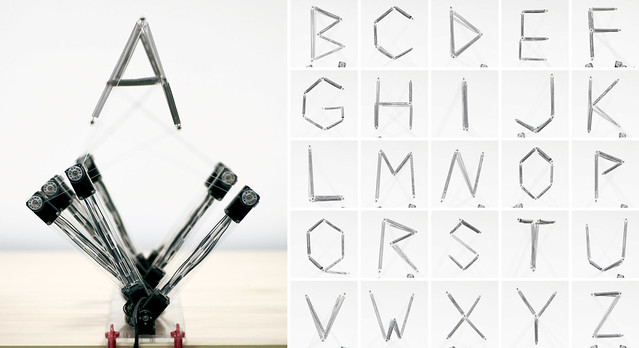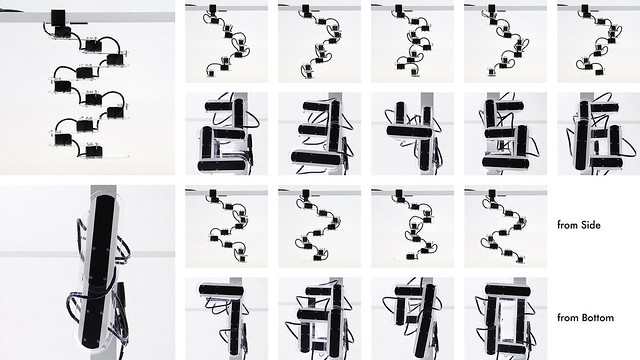報告者:吳柏瑤
報告PPT:20190103書報討論_吳柏瑤
論文名稱:Robotype: Studies of Kinetic Typography by Robot Display for Expressing Letters, Time and Movement
論文作者:Yuichiro Katsumoto ( Smart Systems Institute National University of Singapore )
論文來源:2018 ACM SIGGRAPH Art Gallery
( NTHU ACM Library – SIGGRAPH Art Gallery)
Katsumoto, Y. (2018). Robotype: studies of kinetic typography by robot display for expressing letters, time and movement. Leonardo, 51(4), 386-393.
論文連結:創作者網站、artpapersgallery2018-Robotype

論文摘要
Humans use letters, which are two-dimensional static symbols, for communication. Writing these letters requires body movement as well as spending a certain amount of time; therefore, it can be demonstrated that a letter is a trajectory of movement and time. Based on this notion, the author conducted studies regarding multidimensional kinetic typography, primarily using robots to display a letter and visualize its time and movement simultaneously. This paper describes the project background and design of the three types of robotic displays that were developed and discusses possible expressions using robotic displays.



Humans invented words to communicate with each other and letters to record these words. Owing to letters, humans have been able to communicate beyond the present into the future. The durability of paper is substantially longer than a human life span, and thus letters written on paper can be retained almost indefinitely. Although the written letters themselves do not move, humans require moving their body and spending time to create them.
The movement and time spent by the writer are usually apparent in the brush or pen stroke of the letter. The shading, blurring and density of ink demonstrate the behavior and movement of the writer over time; one can deduce the writer’s emotion or thought. Thus, our letters are not only two-dimensional symbols that convey messages, but also involve the time and movements that humans devote toward communication.
The time and movement observed in handwriting have not been regarded as important for letterpress printing and computer monitors that have appeared more recently. However, could it be possible to obtain a display technology for letters that coexists with time and movement beyond the two-dimensional plane? With the development of such a technology, we could determine implications beyond those of the words themselves. Based on this notion, we explored a new form of typography. We began by developing a multi- dimensional display for kinetic typography, primarily using robot technology and the illusion of depth. We named the project and the devices Robotype.
We have developed three types of Robotype thus far: Sujigen for displaying Arabic numerals, Mojigen [1] for the Roman alphabet, and 7×7 [2] primarily for double-byte characters such as Japanese. Each display is designed with conventional computer displays as a motif. In this paper, we describe the design of Robotype, its kinetic typography and the possibility of its expression.
